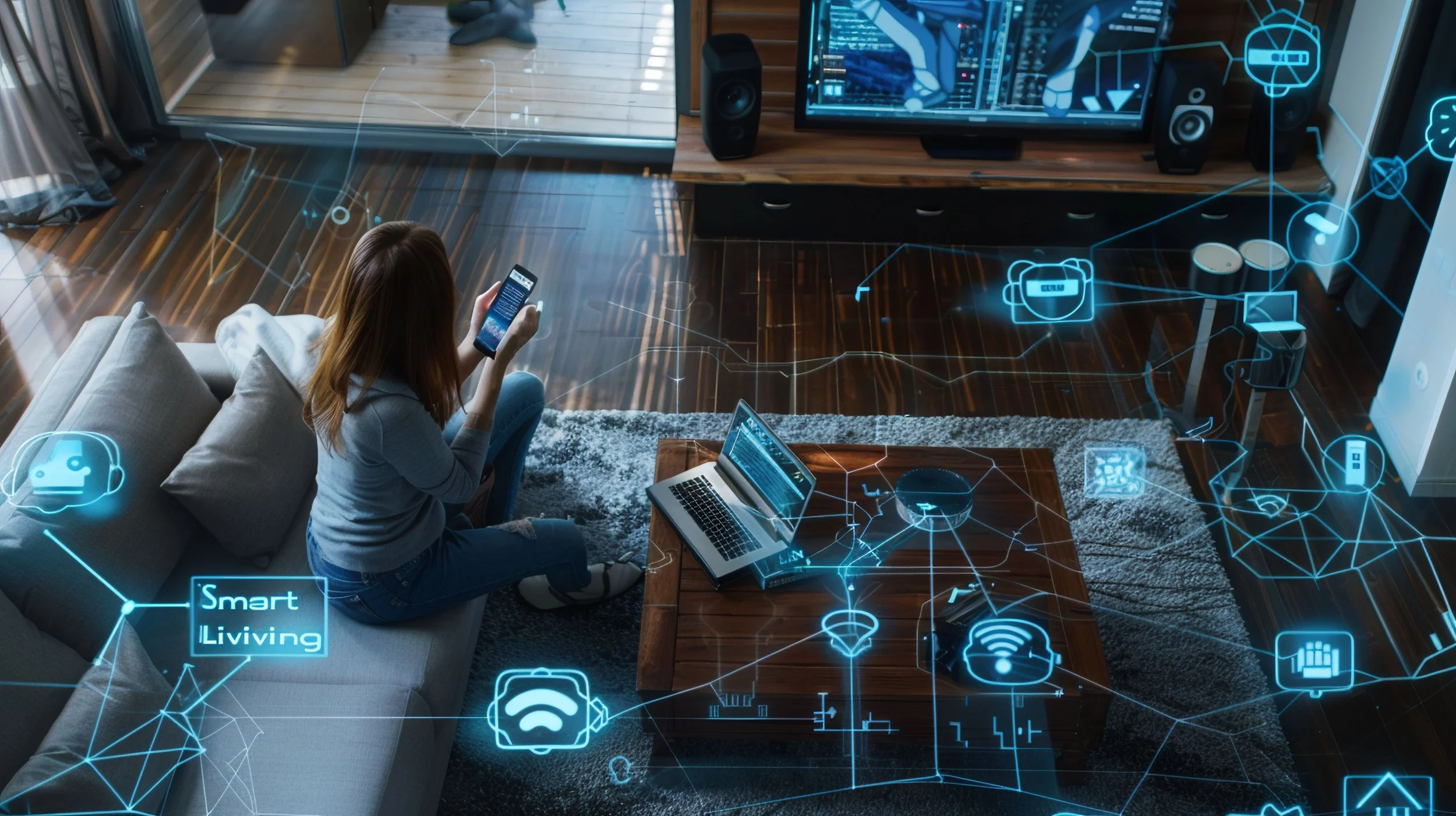AI Meets IoT Networks
Abstract:
The integration of Artificial Intelligence (AI) and the Internet of Things (IoT) is driving a new era of intelligent systems where data is processed locally, decisions are made in real time, and networks operate with greater efficiency and autonomy. Known as AIoT, this convergence is enabling smarter devices, predictive capabilities, and seamless automation across industries. This article explores how AI and IoT are merging at the edge to power smart networks in 2025, examines their transformative applications, addresses technical and ethical challenges, and highlights the future of connected intelligence.
Keywords:
AIoT, Artificial Intelligence, Internet of Things, Edge Devices, Smart Networks, Intelligent Systems, Real-Time Processing, Predictive Maintenance, Automation, Smart Infrastructure
Introduction:
As devices become increasingly interconnected, the fusion of AI and IoT—often called AIoT—is unlocking new levels of intelligence across digital systems. In 2025, this convergence is redefining how machines sense, learn, and act. IoT devices generate massive amounts of real-time data, and AI provides the analytical engine to interpret that data, predict outcomes, and make autonomous decisions. When these functions happen directly on edge devices—like sensors, cameras, and industrial machines—it reduces latency, enhances responsiveness, and decreases reliance on centralized cloud processing. This article explores how AI and IoT are merging at the edge to shape the future of smart, responsive, and autonomous networks.
1. What is AIoT and Why It Matters
AIoT refers to systems where artificial intelligence is embedded into IoT devices, enabling them to analyze data and act independently. Traditional IoT systems collect data and transmit it to cloud platforms for analysis, but AIoT shifts that intelligence closer to the source. With edge computing and machine learning, devices can detect anomalies, trigger alerts, and optimize performance in real time. This decentralized model is especially valuable in environments that require immediate action, such as autonomous vehicles, industrial robotics, or remote monitoring systems. AIoT reduces bandwidth usage, strengthens data privacy, and powers more resilient networks.
2. Applications in Smart Cities, Industry, and Healthcare
AIoT is already transforming urban infrastructure. In smart cities, traffic sensors powered by AI manage congestion in real time, while smart lighting systems adapt to pedestrian movement. In manufacturing, intelligent edge devices monitor machinery for wear and predict maintenance needs, minimizing downtime. Healthcare providers use AIoT to remotely monitor patients through wearables that detect early signs of deterioration and alert medical staff. Agriculture benefits from AI-enhanced sensors that track soil conditions, irrigation, and crop health. These innovations reduce human workload, enhance efficiency, and improve service delivery across sectors.
3. Benefits of Intelligent Edge Devices
Edge devices equipped with AI offer key advantages over traditional centralized systems. They reduce latency, enabling real-time responses critical for safety and operational performance. By processing data locally, they limit the need for constant internet connectivity, which is ideal for remote or mobile applications. AI also reduces noise in sensor data, improves anomaly detection, and facilitates automation at scale. In industries with strict regulatory and privacy requirements, such as finance and healthcare, on-device intelligence ensures sensitive data is processed securely without leaving the local network.
4. Challenges in Integrating AI and IoT
Despite its benefits, AIoT also presents technical challenges. Training and deploying AI models on low-power edge devices requires efficient hardware and optimized algorithms. Updating models across distributed networks demands robust software infrastructure. Security is another concern—IoT devices have traditionally been vulnerable to attacks, and adding AI increases their complexity. Ethical challenges include responsible data usage, algorithmic bias, and user transparency. In 2025, leading organizations are investing in federated learning, secure AI frameworks, and open standards to ensure safe and scalable AIoT adoption.
5. The Future of AIoT and Connected Intelligence
Looking ahead, AIoT is expected to become foundational to smart infrastructure and next-gen automation. Developments in 5G/6G, neuromorphic computing, and quantum edge processing are expanding the capabilities of edge devices. AI models will become more adaptive, context-aware, and energy-efficient. Shortly, AIoT will underpin everything from decentralized energy grids to autonomous supply chains and predictive emergency response systems. This convergence marks a shift from merely connected systems to truly intelligent environments that think, learn, and evolve in real time.
Conclusion:
The convergence of AI and IoT is enabling a world where machines do more than just connect—they understand, predict, and act. Intelligent edge devices are transforming industries by making networks smarter, faster, and more autonomous. As AIoT continues to mature, organizations must address technical, ethical, and operational challenges to unlock its full potential. In 2025, AIoT is not a futuristic concept—it’s the architecture of today’s most advanced digital ecosystems.
Resources:
Intel – AI at the Edge and IoT Integration: https://www.intel.com/content/www/us/en/internet-of-things/overview.html
NVIDIA – AI and IoT Solutions: https://www.nvidia.com/en-us/autonomous-machines/
Cisco – Edge Intelligence and IoT Platforms: https://www.cisco.com/c/en/us/solutions/internet-of-things/overview.html
Microsoft Azure – AIoT Solutions: https://azure.microsoft.com/en-us/solutions/iot/
McKinsey – The AIoT Opportunity: https://www.mckinsey.com/business-functions/mckinsey-digital/our-insights/the-aiot-opportunity

